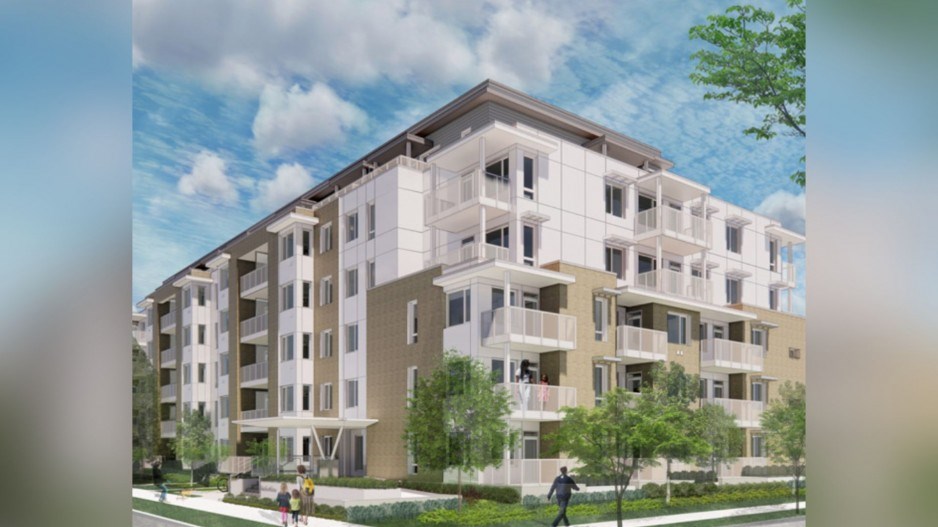Since approving an ambitious 10-year plan in November 2019, to build 2,000 new and redeveloped affordable housing units, Metro Vancouver’s regional government has only increased its total units by 69, from 3,389 to 3,458.
But a dramatic change of pace is finally near, says Heather McNell, Metro Vancouver’s deputy chief administrative officer, thanks in large part to a recently secured $158-million BC Housing grant to build 659 new units, either on existing aging complexes or new public land.
“We're just ramping up,” McNell told Glacier Media.
“We didn't do expansion for a lot of years,” said McNell, noting “we have never had the direction” and “most of our housing stock was built in the '70s and '80s, and came to us through previous provincial and federal programs.”
The goal of the 10-year plan was to build 2,000 new units in that time; however, the regional government has pushed reset and the aim now is to have all the units delivered by “2029+.”
While housing starts and completions reached record levels in B.C. during the pandemic, McNell said COVID-19 restrictions and supply chain issues impacted the regional government’s operations. Furthermore, escalating construction costs and, more recently, rising interest rates, had limited Metro’s ability to move projects ahead.
“We recognize there have been some delays,” said McNell, adding, “I don’t know if we’ve been stalled wholesale; we’ve been pushing hard …for rapid completion of these [659] units.”
But with new funding finally in hand, five priority projects will bring the 659 new or redeveloped units by the end of 2025, according to a report to the board’s housing committee May 12.
That report states the estimate to build the 2,000 units will be about $1 billion, so more money will be needed to get the rest (1,340) constructed. Metro is already contributing $100 million and those public subsidies bring the cost of financing construction down, as rents collected over time pay off loans. The regional government says it is still advocating for federal government funding to support the plan.
The overarching method will be densification, as all five approved projects — in Vancouver, Pitt Meadows, Coquitlamand Burnaby (two) — will be new apartment buildings, including three sites that were formerly townhome complexes. Hence, some of these new units in the first tranche of the plan will replace those existing townhomes, such as a 174-unit apartment complex in Burnaby called The Connection, which replaces 30 townhomes (Eastburn Square).
In Vancouver, the 86-townhome complex Heather Place has been approved for 230 new units, of which 67 have been completed while 87 are under construction in a three-phase plan.
In Coquitlam, the 67-unit townhome complex called Malaspina Village will be converted into a 167-unit apartment building by December 2025.
It’s unclear at this point how many of the 2,000 units will be new and how many will be redeveloped, once the 10-year plan is complete.
“So, in the late teens (2010s), that's when we started to develop the 10-year plan, recognizing there was lots of potential to redevelop these sites to achieve more density. So, really, we have a lot of stuff that's reaching the end of its life,” said McNell.
Also unclear is how Metro will respond to the need for family-sized housing through the redevelopments. In 2019, Metro’s stock consisted of 67 per cent townhomes and 33 per cent apartments, including 41 per cent of units being two-bedrooms and 40 per cent being three-bedrooms.
“So, we're working on multiple fronts to redevelop, to expand and to fix up what we have kept it in good repair,” said McNell, whose reports show 560 units will receive “deep retrofits” by 2025. Furthermore, nearly $10 million of provincial and regional funds will go toward four child-care centres in the five projects.
McNell said Metro Vancouver’s goal, at this point, is to have 70 per cent of all units be “low end market tenancies,” (LEM) which is to say they are intended for “low to moderate incomes, and rents are generally 10-20% below comparable market rents.”
The other 30 per cent is “rent-geared-to-income tenancies,” (RGI) which is to say they are intended “for households on low or fixed incomes, and rents are set at 30% of gross monthly household income.”
RGI also includes shelter rate units, for individuals faced with varied disabilities. For the new units, Metro is aiming for a 70/15/15 mix of LEM/RGI/shelter rates.
The LEM units bring in more income for Metro Vancouver, in order to subsidize the RGI units and lessen the burden on public subsidies, explained McNell.
In 2019, 34 per cent of all units were RGI whereas as of this month only 30.7 per cent are RGI.
McNell explained that RGI units can fluctuate as tenants on RGI can move up to LEM rates with higher incomes.




